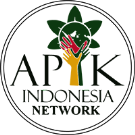INTERPRETIVE STRUCTURAL MODEL OF YOUTH-BASED WASTE MANAGEMENT ENABLERS IN LABUHAN BAJO VILLAGE, INDONESIA
DOI:
10.29303/jbl.v5i1.845Published:
2022-08-14Issue:
Vol. 5 No. 2 (2022)Articles
Downloads
How to Cite
Downloads
Metrics
Abstract
Many policies, programs, and projects have been attempted to resolve waste problem in Indonesia, yet it is still one of the major environmental problems in the country. Several waste management practices exist at various levels, from the community level up to the industrial level. With increasing budget available for villages through various schemes, village-level management poses opportunities to solve waste problem in Indonesia. This empirical study uses Interpretive Structural Model (ISM) to examine variables contributed to youth-based waste management practice in Labuhan Bajo Village and the relationships among the variables. Participant observations and in-depth interviews were carried out to solicit information on important enablers for youth-based waste management. The model was developed using ten enablers. In this study, the model shows that the first driving power (at the bottom of the ISM) is facilitation, in this case, a NGO. On top of the model is the financial gain enabler. The MICMAC analysis shows that most of the enablers are in quadrant III (Linkages) category. Effective and
efficient handling of the linkage enablers is necessary for youth-based waste management. This study offering enablers’ model gained from empirical study may offer fruitful insight for enhanced scholarship in waste management model at village level led by the local youth particularly in Indonesian context.
References
Armadi, M., Suarna, W., Sudarma, M., Mahendra, S. M., & Sudipa, N. (2020). Model Pengelolaan Sampah Berbasis Masyarakat Community-Based Waste Management Model in Denpasar City. ECOTROPHIC, 14(2), 131–142. https://doi.org/https://doi.org/10.24843/EJES.2020.v14.i02.p04
Attri, R., Dev, N., & Sharma, V. (2013). Interpretive structural modelling (ISM) approach: an overview. Research Journal of Management Sciences, 2319(2), 1171.
BPS Kabupaten Sumbawa. (2019). Utan Subdistrict Statistics 2019. Katalog BPS : 1102001.5204061. ISBN : 978-602-5567-64-3. [Indonesian]
BPS. (2020). Hasil Sensus Penduduk 2020. https://www.bps.go.id/website/images/Hasil-SP2020-ind.jpg
[DKP] Dinas Kelautan dan Perikanan Kabupaten Sumbawa. 2014. Annual report of Marine and Fisheries Agency of Sumbawa District. Dinas Kelautan dan Perikanan Kab Sumbawa. Sumbawa [Indonesian].
Godet, M. (1986). “Introduction to ‘la prospective’: seven key ideas and one scenario methodâ€. Futures, 18(2), 134–157.
Jambeck, J. R., Geyer, R., Wilcox, C., Siegler, T. R., Perryman, M., Andrady, A., Narayan, R., & Law, K. L. (2015). Plastic waste inputs from land into the ocean. Science, 347(6223), 768–771. https://doi.org/10.1126/science.1260352
Kholil, L., Eriyatno, E., Sutjahyo, S., & Soekarto, S. (2008). Pengembangan model kelembagaan pengelola sampah kota dengan metode ISM (Interpretive Structural Modelling) Studi Kasus di Jakarta Selatan. Jurnal Transdisiplin Sosiologi Dan Ekologi Manusia, 2(1), 31–48.
Kurniawati, R. (2020). Sosialisasi NTB Zero Waste Melalui Literasi Digital. JUPITER, XVII(1), 46–61. https://journal.unhas.ac.id/index.php/jupiter/article/view/11313/5835
MoEF. (2020). National Plastic Waste Reduction Strategic Actions for Indonesia. Republic of Indonesia.
Ravi, V., Shankar, R., & Tiwari, M. K. (2005). Productivity improvement of a computer hardware supply chain. International Journal of Production and Performance Measurement, 54(4), 239–255.
Sushil. (2012). Interpreting the interpretive structural model. Global Journal of Flexible Systems Management, 13(2), 87–106. https://doi.org/10.1007/S40171-012-0008-3
Syaputra, M. (2019). Perencanaan Pengelolaan Sampah di Jalur Pendakian Taman Nasional Gunung Rinjani. Jurnal Belantara, 2(1), 17–23. https://belantara.unram.ac.id/index.php/JBL/article/view/99/pdf
Talib, S., & Faisal, M. N. (2016). E-government to m-government: A study in a developing economy. Int. J. Mobile Communications, 14(6), 568–592. https://doi.org/DOI: 10.1504/IJMC.2016.079301
UNEP. (2015). Global Waste Management Outlook (D. C. Wilson (ed.)). United Nations Environment Programme.
https://www.unep.org/resources/report/global-waste-management-outlook
Wilson, D. C., & Velis, C. A. (2015). Waste management - still a global challenge in the 21st century: An evidence-based call for action. Waste Management & Research, 1049–1051. https://doi.org/https://doi.org/10.1177%2F0734242X15616055
World Bank. (2021). Trends in Solid Waste Management. https://datatopics.worldbank.org/what-a-waste/trends_in_solid_waste_management.html
Author Biographies
Eni Hidayati, University of Mataram
Ida Ansharyani, University of Samawa
Mahardika Rizqi Himawan, University of Mataram
License
Copyright (c) 2021 Jurnal Belantara

This work is licensed under a Creative Commons Attribution 4.0 International License.
The Authors submitting a manuscript has understood that if accepted for publication on Jurnal Belantara, the copyright of the article shall be assigned to Jurnal Belantara of the Forest Study Program University of Mataram as the publisher of the journal. Copyright encompasses rights to reproduce and deliver the article in all forms and media, including reprints, photographs, microfilms, and any other similar reproductions, as well as translations.
Jurnal Belantara of the Forest Study Program University of Mataram and the Editors make every effort to ensure that no wrong or misleading data, opinions, or statements be published in the journal. In any way, the contents of the articles and advertisements published in Jurnal Belantara are the sole responsibility of their respective authors and advertisers.
We strongly encourage that manuscripts be submitted to the online journal system in http://belantara.unram.ac.id/index.php/JBL/index. Authors are required to create an account and submit the manuscripts online. For submission inquiries, please follow the submission instructions on the website. If the author has any problems with the online submission, please contact Editorial Office at the following email: belantara@unram.ac.id
Contributors are responsible for obtaining permission to reproduce any materials, including photographs and illustrations, for which they do not hold the copyright and for ensuring that the appropriate acknowledgments are included in the manuscript.
Users of this website will be licensed to use materials from this website following the Creative Commons Attribution 4.0 International License. No fees charged. Please use the materials accordingly.




